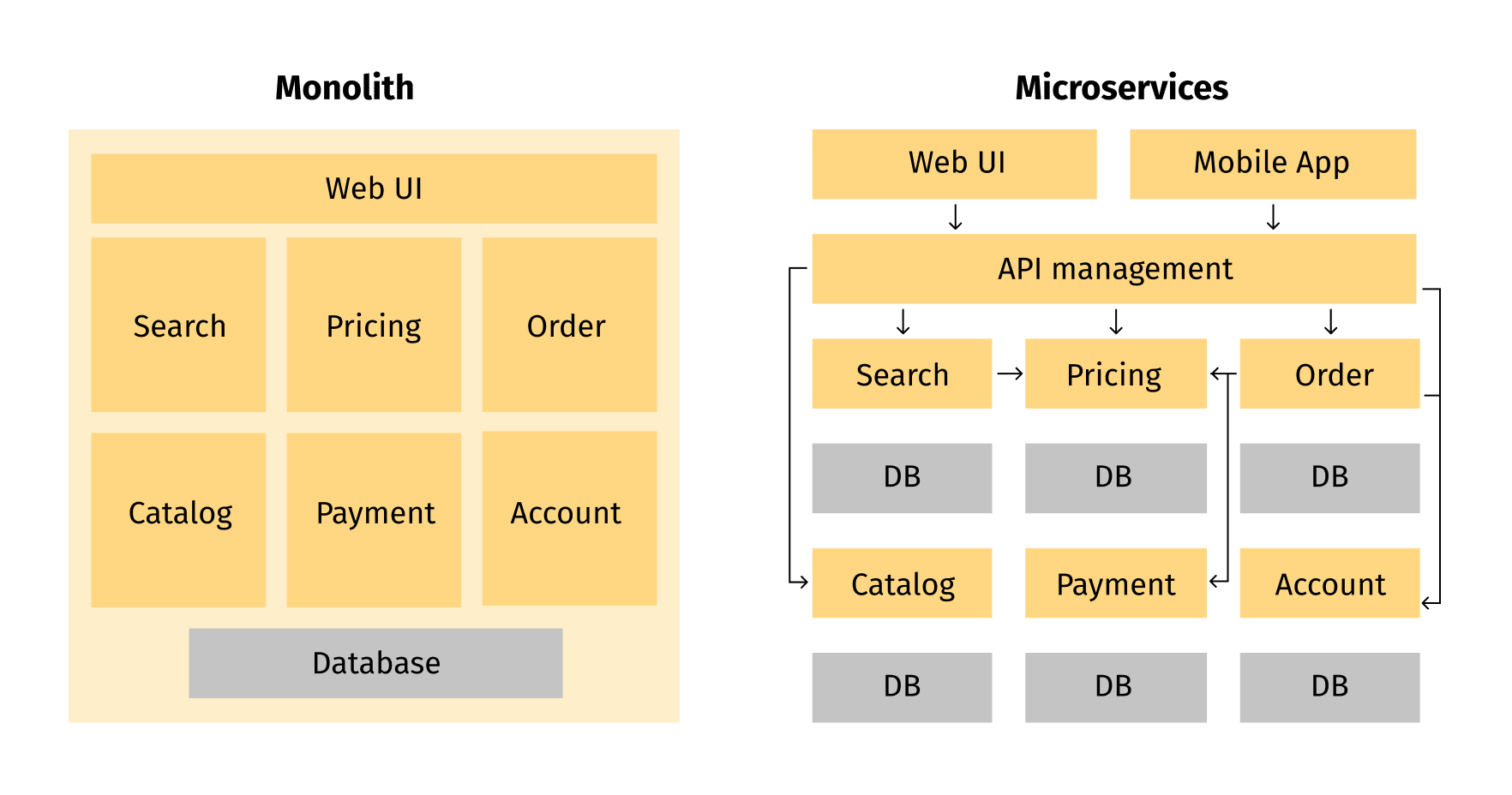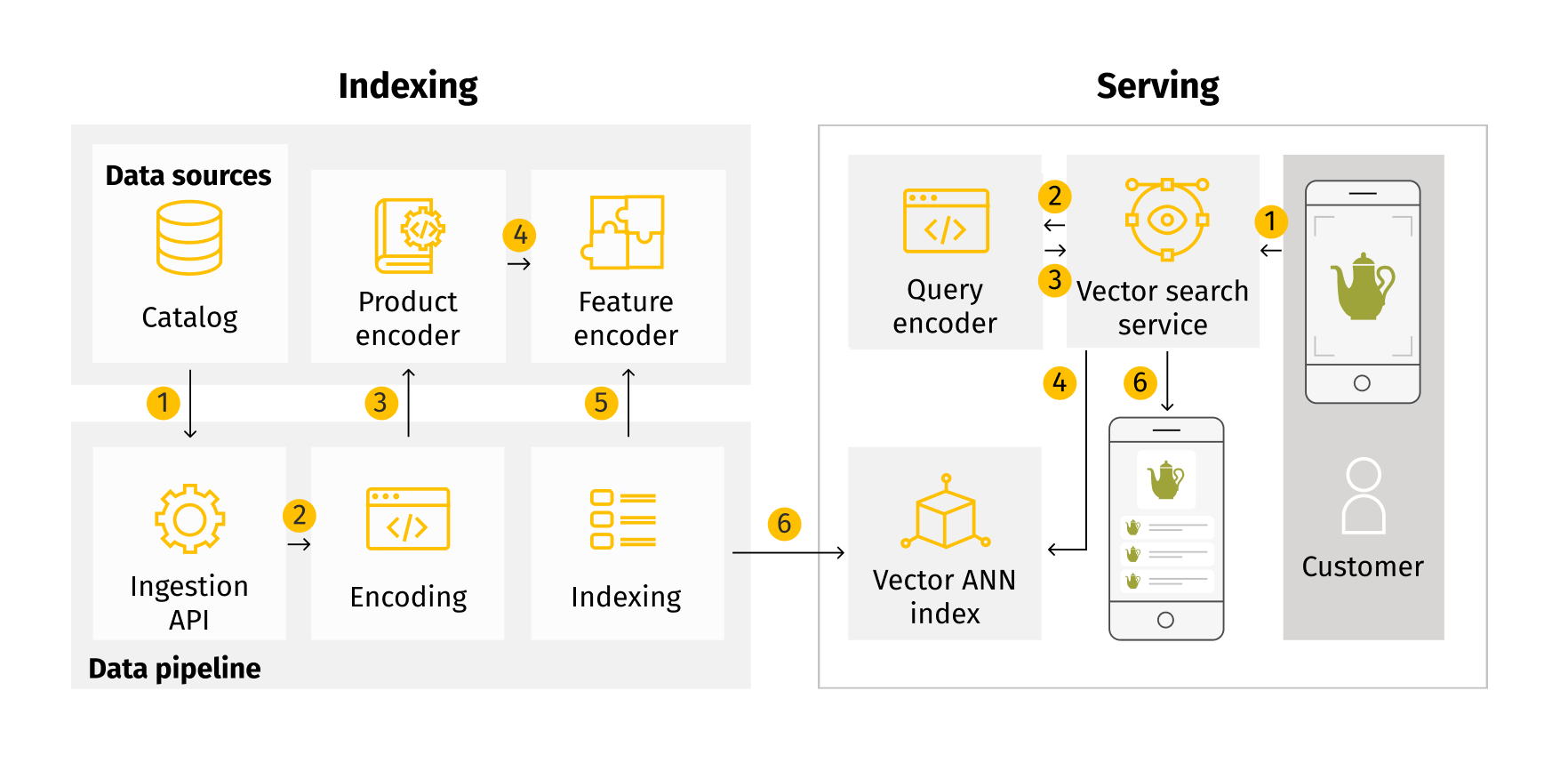
A digital go-to-market strategy for forward-thinking manufacturers
In today’s highly digitized world, business models need to change to keep up with consumer demands. With the impacts of the COVID-19 pandemic, businesses are having to reimagine their business models entirely, and they’ve had to do it at a massively accelerated pace. The manufacturing industry is no exception.
A shift in the relationship between manufacturers and customers
Traditionally, manufactured goods reach consumers through business intermediaries such as wholesalers or retailers. In recent years, however, we have been witnessing a shift in the direct relationship between consumer and manufacturer, introducing a new on-demand flavor of direct-to-consumer (D2C) marketing and sales called the consumer-to-manufacturer (C2M) model.
The C2M model enables a closer business relationship between consumers and manufacturers by cutting out the middleman and producing goods on demand. As a result, consumers can purchase high-quality products at lower prices directly from the manufacturer. This is due to the fact that products are focused on and driven by consumer demand, unlike B2B-only business models of the past. There is also less financial risk in manufacturing goods after an order has been placed, as opposed to producing goods in mass and then attempting to generate demand from consumers.
Is C2M the future for manufacturing? Increasingly, it looks like a win-win solution for meeting consumer-driven demand.
To stay on top of the game, however, forward-thinking manufacturers need to devise a comprehensive digital go-to-market strategy that seamlessly blends B2B and C2M marketing and sales, implement a composable ecommerce platform in the cloud, and use AI-powered analytics and personalization tools to deliver engaging, convenient and downright delightful experiences for their customers.
A winning digital go-to-market strategy for manufacturers
So, how do we make this go-to market strategy a reality? Migrating to the cloud is your best bet. It’s easier to scale, integrate and update best-in-class technologies. Below we outline some of the technologies you can adopt to optimize your go-to-market strategy.
Step 1: Establish digital commerce capabilities
Application modernization
Monolithic architecture has been the traditional way to build applications. However, the need for scalability, flexibility and customization in today’s hyper-connected digital reality presents some challenges for monolithic systems. Implementing new technologies or even customizing older ones, requires monumental effort, resources, time and costs, not to mention the impact on the entire business ecosystem during development and implementation.
If you plan to develop from scratch, it is wiser to go with composable commerce and microservices architecture. Adopting a microservices architecture is much more efficient, and easier and faster to implement, update and scale. Software components on a microservices platform are independent of each other, meaning they can be changed or removed without affecting the function of other components. Software developers can also work in smaller teams on specific components leading to added productivity and change management efficiency.
Grid Dynamics has extensive expertise in helping large business enterprises migrate from monoliths to microservices architecture. This migration follows the principles of DevOps, open source, cloud, test automation, and other agile methodologies for continuous delivery and automation.

Read one of our case studies on the subject here: Avoid the monolithic release process when migrating to microservices
Composable commerce
As we’ve already established, monolithic architecture can be challenging to manage. That’s why you’re better off with a microservices architecture that fosters innovation and speeds up time to market. With composable commerce, you can build a unified commerce system that fosters independent and customizable components of a more extensive, connected application.
This is achieved by using Packaged Business Capabilities (PBCs): specific third-party software components that best suit your business needs. Some examples of this might be a particular checkout system, search engine or analytics tool. Each PBC counts as a separate microservice which, together, strengthens the functionality of your ecommerce platform and provides added flexibility to the consumer experience.
Step 2: Improve customer experience using advanced services
Key imperatives of the C2M model are consumer loyalty and retention driven by customer experience personalization throughout the buying journey. The average consumer passes through several touchpoints that determine whether or not they will make a purchase. For example, a consumer’s budget, needs, personal preference and timeline impact their purchase decision, but so do certain aspects of the brand experience, like the ease of website navigability and search, personalized and convenient engagement, or targeted sales promotions.
If consumers feel like a manufacturer understands their needs, they’re more likely to buy from them than their competitors - sometimes even if they have to pay more. In fact, 52% of consumers surveyed in the 2021 Achieving Customer Amazement report, said they would be willing to pay more for an amazing customer experience.
Since the start of the pandemic, we’ve seen a massive shift in nearly all aspects of daily life - and most of it is happening online. It comes as no surprise then that current trends point toward an ever-increasing focus on optimizing digital customer experience:
- According to a recent Gartner report, 60% of large enterprises will have completely transformed their business models around consumer experience by 2026; and
- By 2030 up to 25% of all purchasing decisions will be made by machines.
A digital customer experience strategy builds stronger relationships between consumer and manufacturer, And can be defined by important factors such as:
- Reachability: Do consumers have access to you through all of their preferred channels?
- Simplicity: Is your design straightforward and user friendly, and can customers easily find the products they need or want?
- Convenience: Are web, mobile app, social media, email and other channels unified? Is it easy for consumers to switch between channels?
- Personalization: Does your platform offer a personalized experience to each consumer that blurs the line between digital and real world experiences?
The collected channel-based user data can help you better understand the needs and desires of your D2C and B2B customers in order to provide them with a personalized and seamless user experience. And so the most important question is: how to make it happen?
Customer intelligence
Manufacturers must not only understand but predict consumer needs, and be ready to respond appropriately and timeously. The key to this lies in predictive analytics and modeling tools. For example, a Next Best Action Model (NBA) uses machine learning to determine where the interests of the customer and the goals of your business meet. Engaging with customers through your commerce website, email marketing, mobile app experience, call centers, and any other communicative channels allows you to begin collecting and analyzing data to derive valuable insights. The Next Best Action Model is fully-automated and therefore self-optimizing, requiring little manual intervention. With the insight provided by predictive analysis, the manufacturer can understand when and how best to engage with consumers.
The benefits of incorporating customer intelligence and NBA tools into your digital go-to-market strategy are multifold. Not only do they help ensure customer loyalty and retention, but they also drive higher conversion rates, which translate into higher profit margins, which in turn allow manufacturers to offer more higher-margin products and services online. This is especially useful for niche markets.
Product discovery
In many respects, online search engines need to understand consumers’ needs better than consumers themselves. A consumer might use a general search term such as “table”, which could be applied to more than one concept, i.e. not only a table in and of itself but “table game”, “table covering” and so on. This means that your ecommerce platform’s search engine needs to be advanced enough that it contextually understands the full extent of your catalog offerings. A semantic vector search engine learns from customer engagement data to better understand queries and improve the relevance of search results.
However, consumers can’t always find the right words to describe what they’re looking for. With visual search solutions, all they have to do is point and shoot an image to find its equivalent in your catalog, with up to 98% search result accuracy - when you use the right tools.
Grid Dynamics’ bespoke AI modeling powers this visual search capability across a variety of manufacturing sectors, including fashion, dinnerware, fine art, home decor and more. It can also provide “more like this” recommendations which enrich the consumer’s purchasing options.
Read one of our case studies on the subject here: A visual search for dinnerware patterns with Replacements.com

Customer loyalty platform
Another way to ensure customer loyalty is through the use of an omnichannel loyalty program. When consumers earn points for purchases and cash in on rewards, they’re doing more than just placing an order–they’re building a long-lasting relationship with that particular manufacturer. An omnichannel loyalty program gives an added layer of personalization and support to the consumer experience.
Grid Dynamics has helped numerous enterprises integrate a customer loyalty program into their overall digital experience platform. Read one of our case studies here: Reimagining customer loyalty with an omnichannel platform
Step 3: Establish price and promotion management
A robust pricing engine enables manufacturers to optimize pricing models and ROI for different channels and build predictive models that provide valuable decision-making insights. Statistical analysis of competitor prices, sales promotions, and other essential econometric and behavioral factors that influence the cost of a particular product, help manufacturers take the guesswork out of pricing and promotion decisions.
Further, identifying market gaps with competitive intelligence allows manufacturers to maintain a competitive edge regarding trade promotion and price optimization. The manufacturer needs to offer better pricing than their competitors because consumers often compare prices across platforms before making a purchase. Key Value Indicators (KVI) drive the standard by which the manufacturer sets these prices. It is determined by factors such as transaction and basket data, shopper price-perception data, merchant judgment, and many others.

Step 4: Improve inventory visibility
Providing real-time inventory visibility across channels ensures that your customers know what’s available, what’s not, what order fulfillment options are available, how long deliveries may take, and other essential product information and details. With all of these functionalities working in concert together, your customers are more likely to click the checkout button on your ecommerce site.
Looking forward: Augmented reality
The implementation of augmented reality (AR) closes the gap in the consumer’s imagination and makes shopping online more interactive and engaging.
- According to IDC, spending on augmented reality is expected to increase from $12.0 billion this year to $ 72.8 billion in 2024
- The Insight Partners suggest that the market for virtual and augmented reality in retail will reach $17.86 billion by 2028
What’s the use of AR in manufacturing? This computer vision technology places computer-generated objects in a real-time setting. For example, all you have to do is point your mobile phone’s screen at your living room wall and get a better idea of what the couch you’ve been eyeing online would look like there. The ability to visualize products in this augmented reality makes for a much more compelling buying journey and is sure to delight your customers and frighten your competitors.
Make your reimagined digital go-to-market strategy a reality
Digitization is rapidly closing the gap between manufacturers and their consumers. In the coming years consumers will expect an increasingly personalized experience that caters to their every need. That might seem a bit overwhelming, but don’t fret: if you adopt the digital go-to-market strategies that forward-thinking manufacturers are embracing, as laid out for you in this blog, you’re on the path to increased revenue, customer conversions and retention.
In a nutshell:
- Adopt a blended B2B and C2M sales and marketing model with a focus on customer experience;
- Modernize your applications in the cloud with microservices and composable commerce;
- Embed personalization at every touchpoint and reward your loyal customers;
- Optimize your pricing and promotion decisions;
- Use best-in-class technology to do it all.
Grid Dynamics is a digital-native technology services provider that accelerates growth and bolsters competitive advantage for Fortune 1000 companies. We have more than 15 years of experience in digital transformation and software innovation, most notably open source cloud-native programs.
Still have questions about digital go-to-market strategies and application modernization in the manufacturing industry? We’d love to hear from you!
